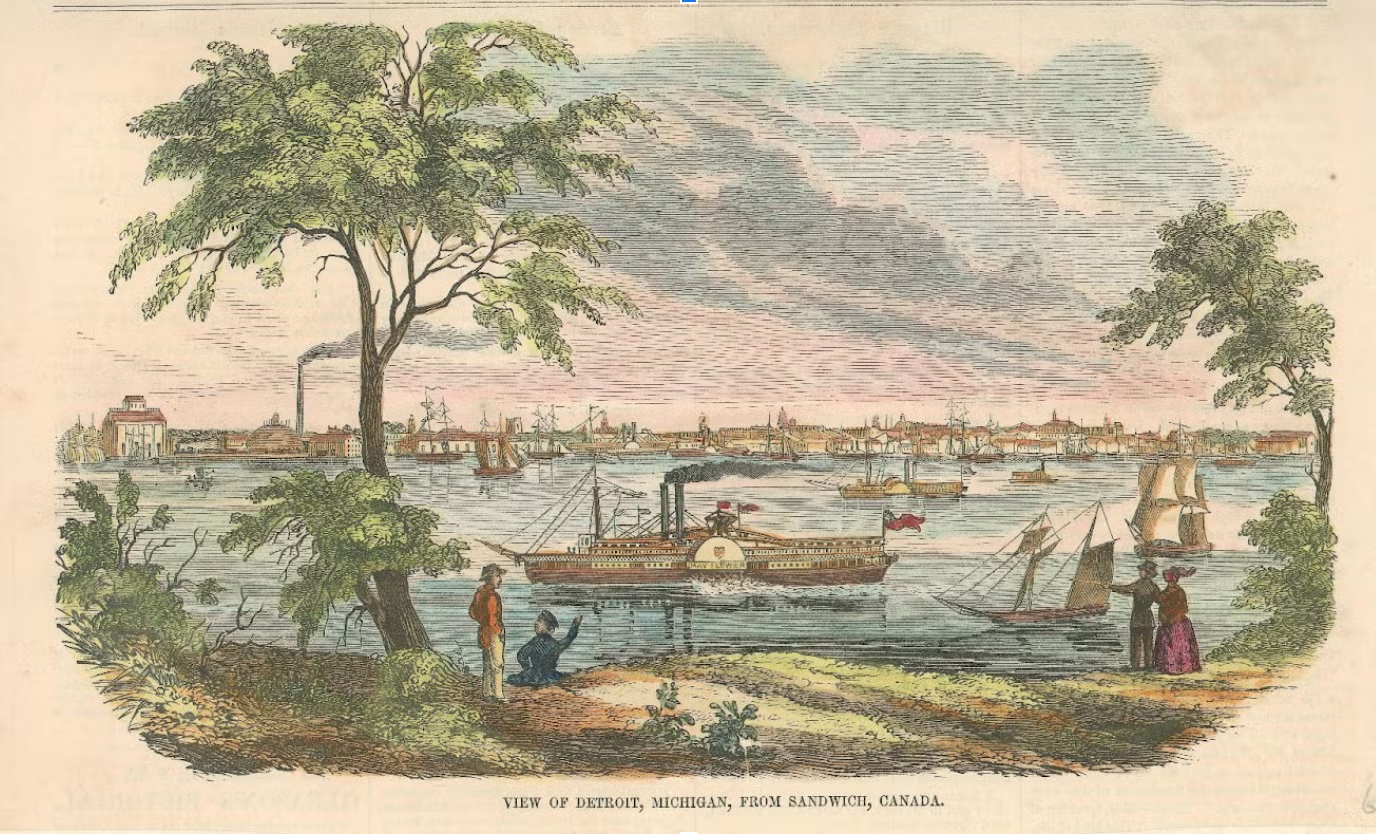
The Detroit River and the University of Michigan
Image Details

UM founder Augustus Woodward’s original plan to rebuild the City of Detroit after a devastating fire included wide diagonal avenues radiating from the riverfront.
“Plan of Detroit” detail, 1834. Drawn by Philu E. Judd. Courtesy of the William L. Clements Library of the University of Michigan.
Since its founding, the University of Michigan’s history has been entwined with the Detroit River’s. The stories presented on this webpage explore four different facets of that rich and complex relationship.
When Michigan Chief Justice Augustus Woodward drew up the University of Michigan’s founding charter in 1817, he saw the new educational program as part of Detroit’s urban renaissance. In 1805, a devastating fire had reduced the timbered city to ashes. Faced with the task of rebuilding, Woodward drew up an ambitious city plan that hinged on long boulevards radiating from the riverfront. Some of Woodward’s plan for the riverfront still survives today (such as the intersection of Jefferson, Woodward, and Michigan avenues, shown above), highlighting the Detroit River’s enduring importance to the city’s identity and economy.
Woodward envisioned Detroit as a global city sustained by commerce on the Detroit River, with a world-class university to match. While the school he founded to promote Detroit’s development moved from a small riverside building in the city to its current, expansive Ann Arbor campus in 1837, the river’s connections with the University of Michigan reverberate through the 19th and 20th centuries. As a commercial artery, the river built and bankrolled the University; as the site of major engineering projects, it inspired the University’s pioneering naval architecture program; as an international border, it drew University alumni into the Underground Railroad’s anti-slavery networks; and as a damaged but recovering ecosystem, it continues to inspire the University’s ecology and sustainability research.
The Detroit River Story Lab was created to share those stories, and many more.

Revenue Stream
Wealth derived from Detroit River commerce has flowed into the University of Michigan for the past two hundred years, supporting construction, scholarships, student life, and research.
How the Detroit River Built the University of Michigan

Freedom-Seekers of the Straits
University of Michigan graduates and faculty were involved in anti-slavery activism before and during the Civil War. Some served as “conductors” on the Underground Railroad, guiding freedom-seekers across the Detroit River to safety in Canada.
U-M and Detroit’s Underground Railroad Network

Over, Under, Across
Faculty and graduates of the University of Michigan contributed to some of the Detroit River’s most iconic engineering projects, helping to make it the world’s most active shipping corridor in the early 20th century.
U-M’s Pioneers in Waterway Engineering

Safer Waters
One of the DRSL’s missions is to educate people about the Detroit River’s unique habitats, and to help preserve those habitats for future generations. By doing so, it continues a long tradition of Great Lakes watershed research and activism at the University of Michigan.
Ecological Advocacy and Research at U-M
Authored by Kayla Grant, PhD in English Language and Literature (University of Michigan ’22)


